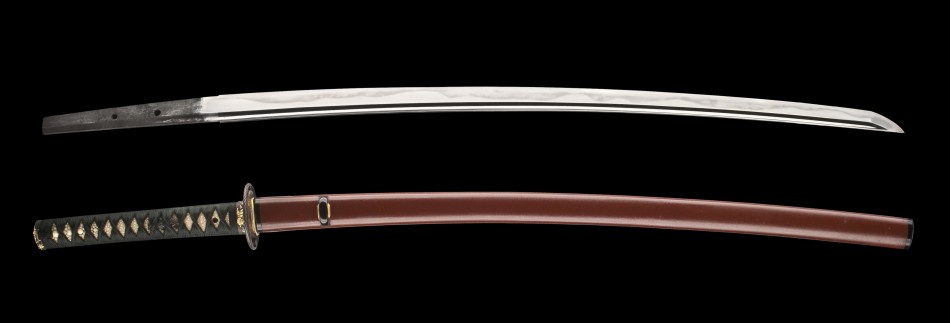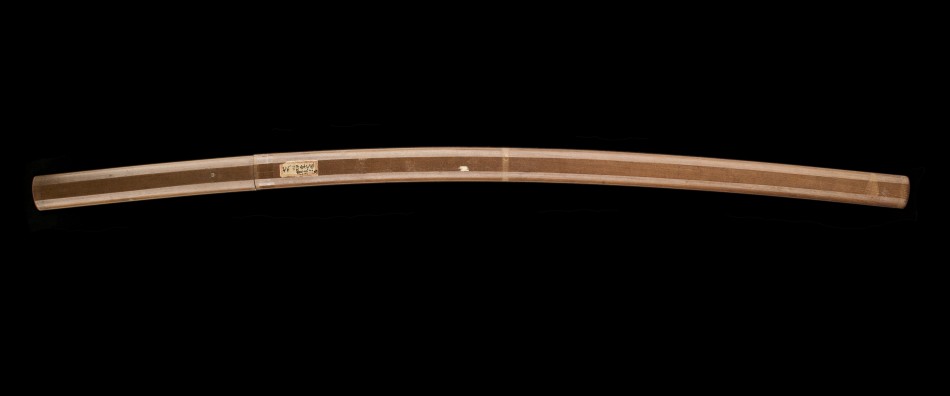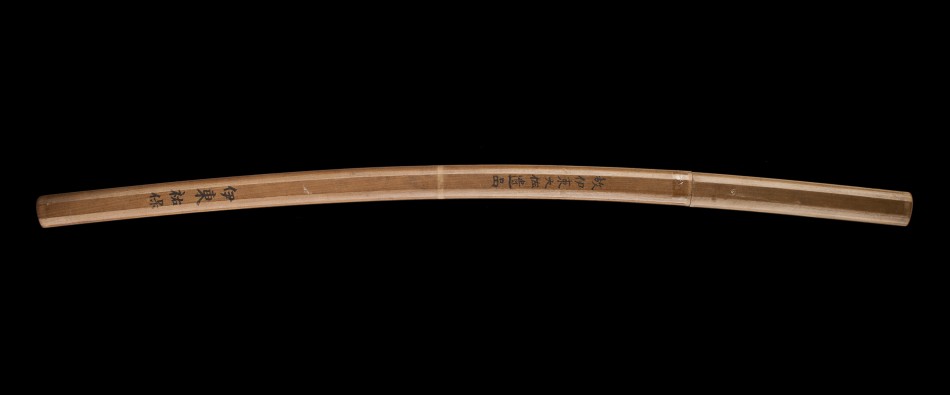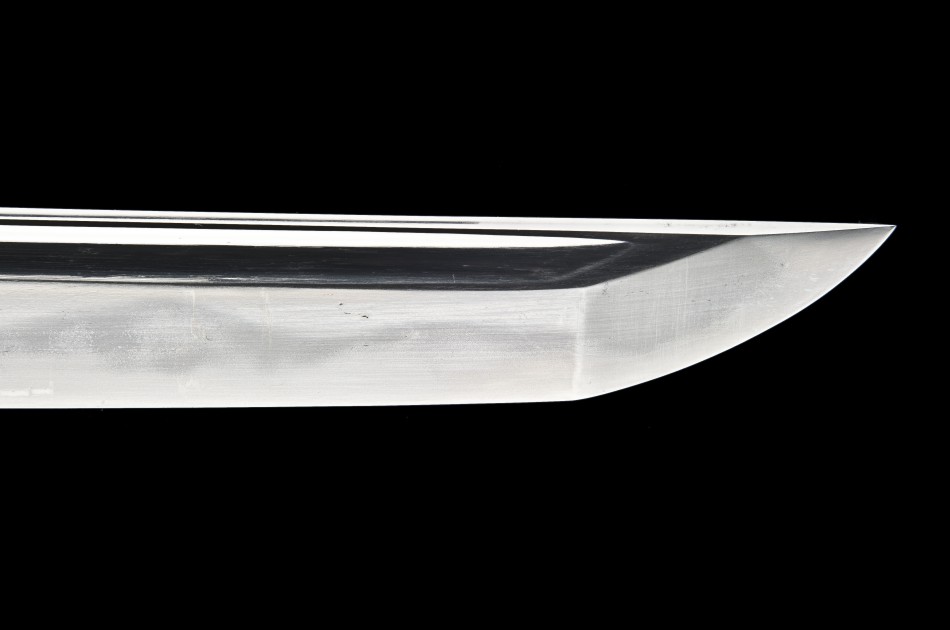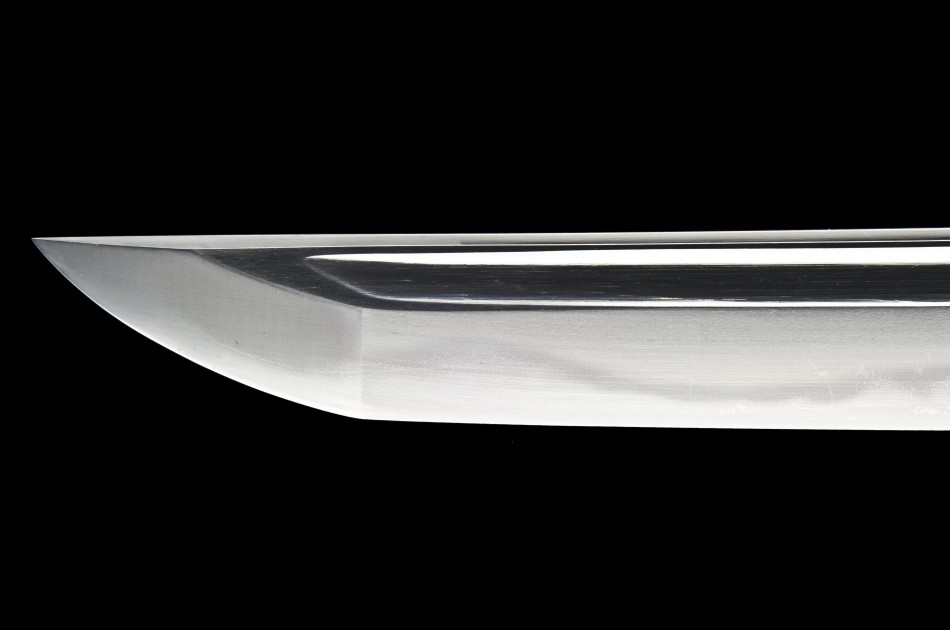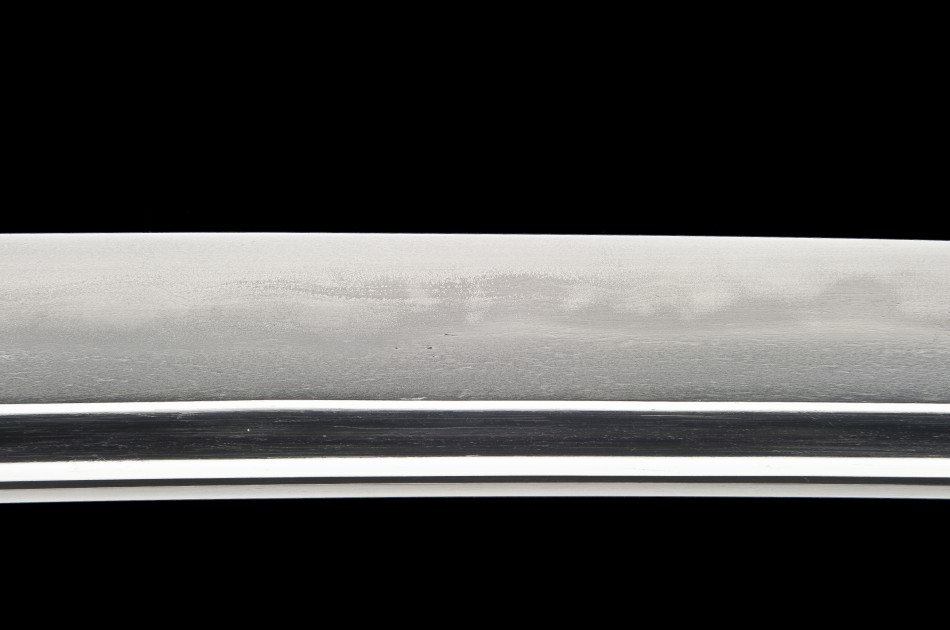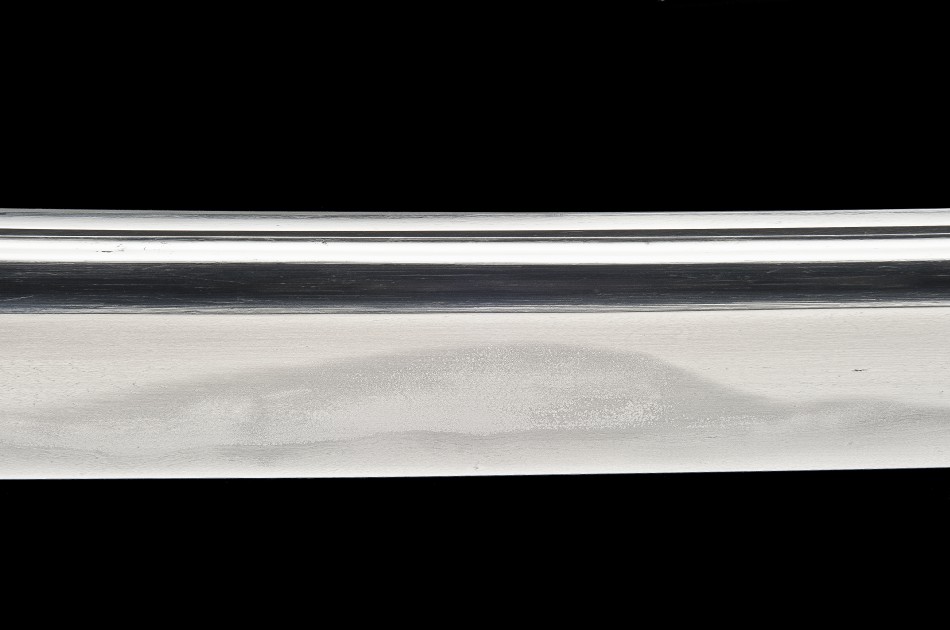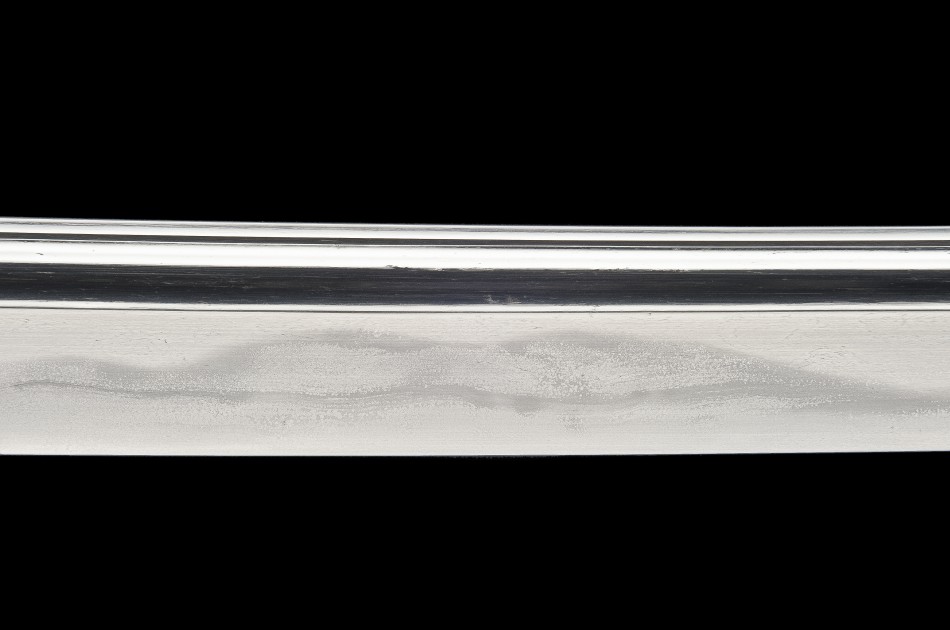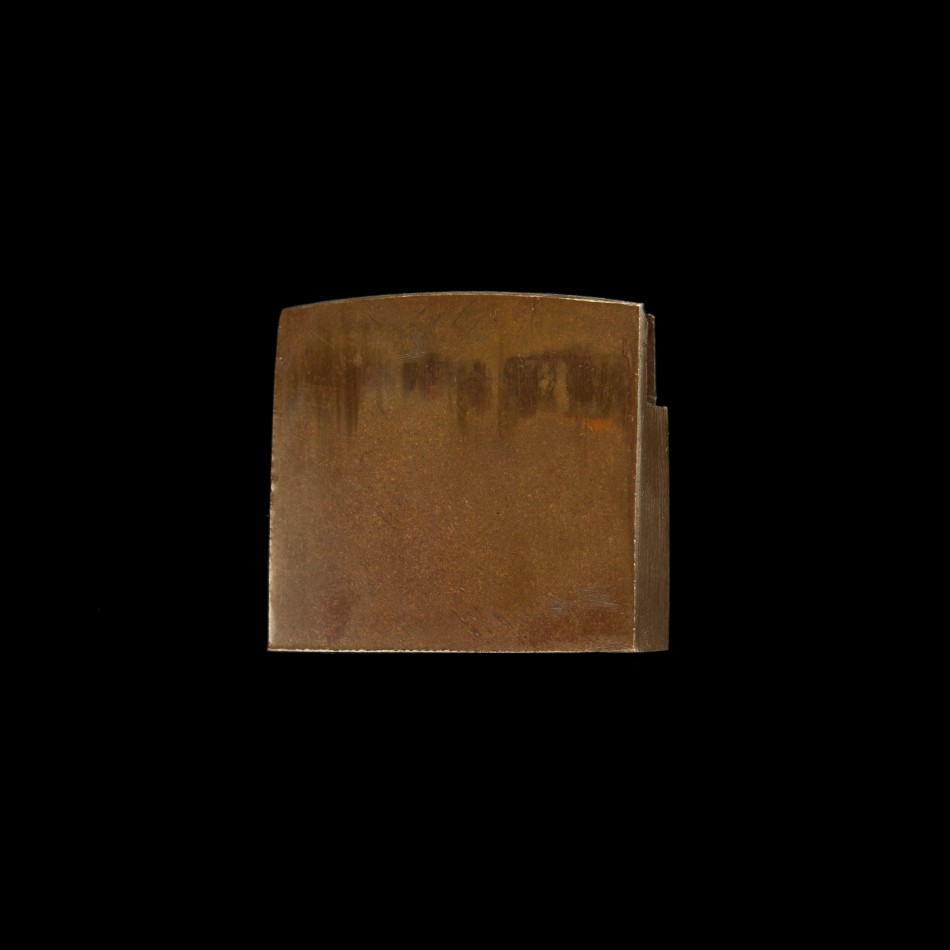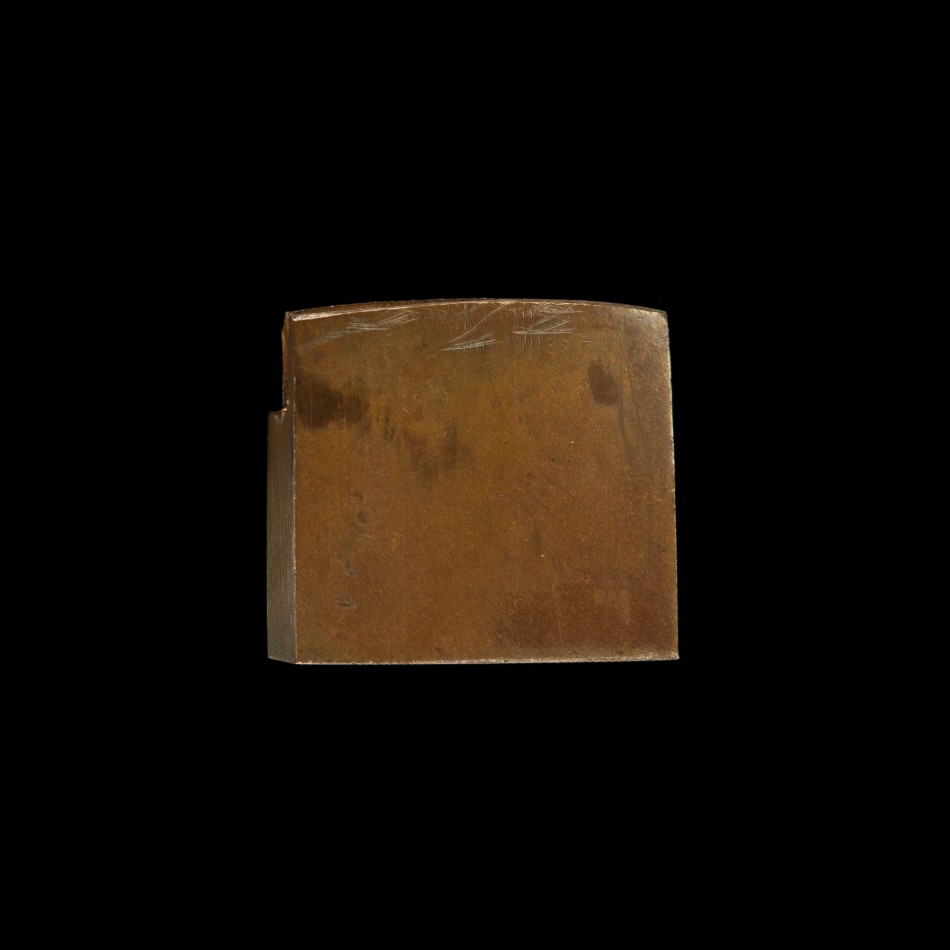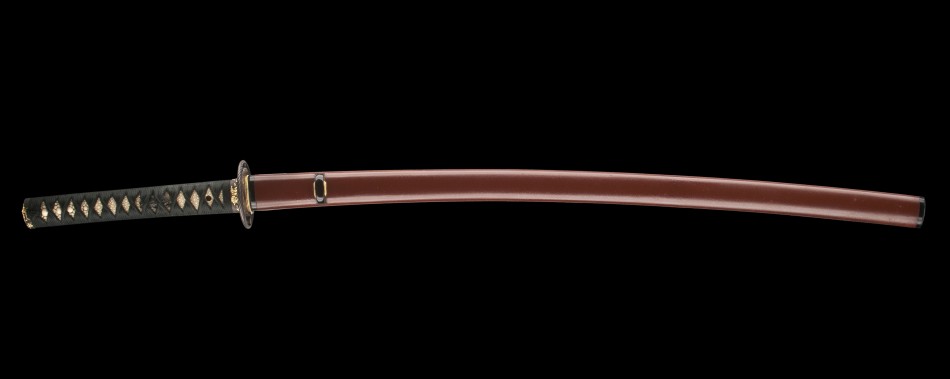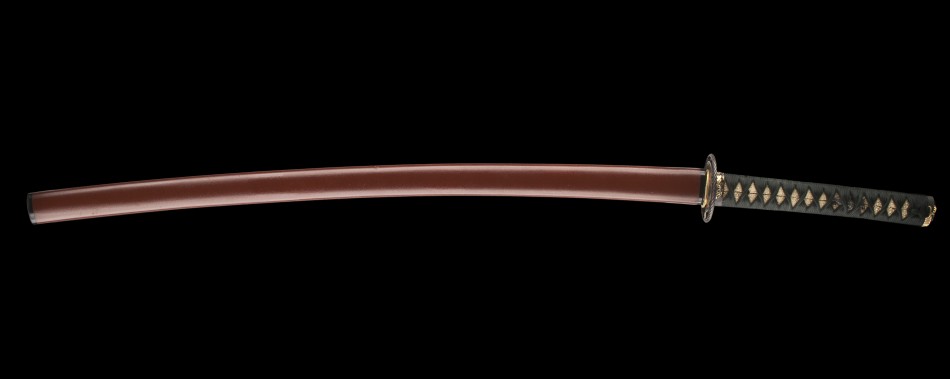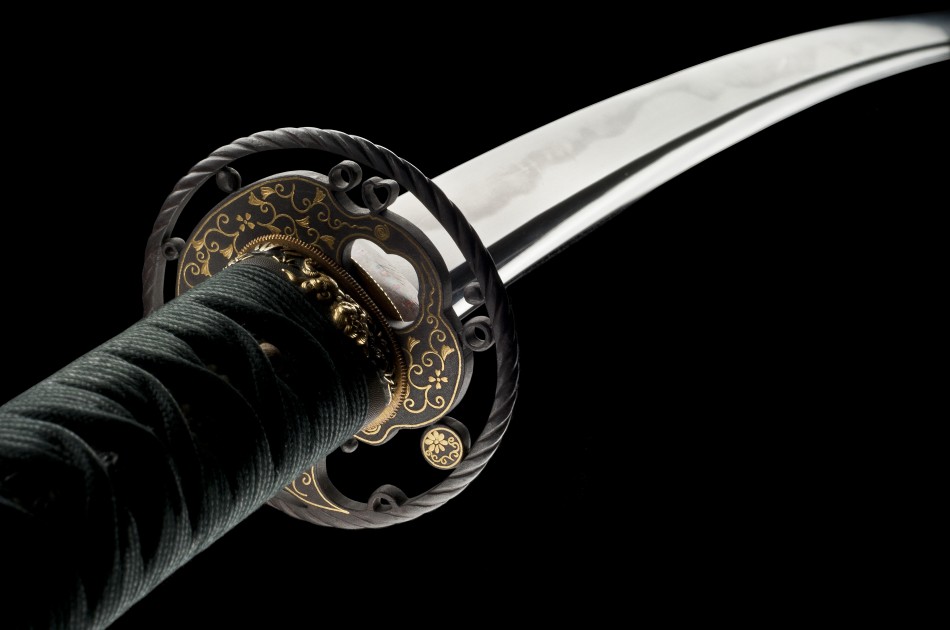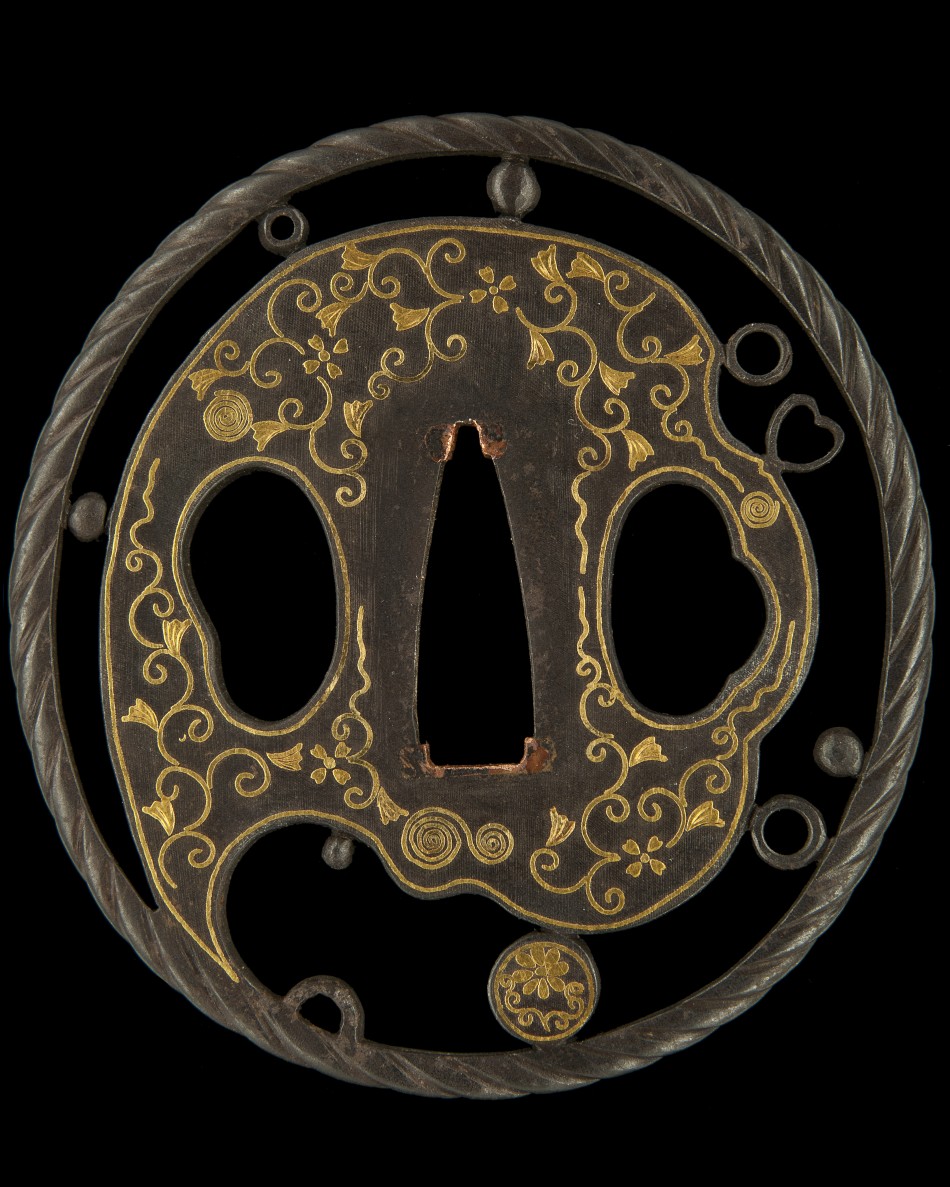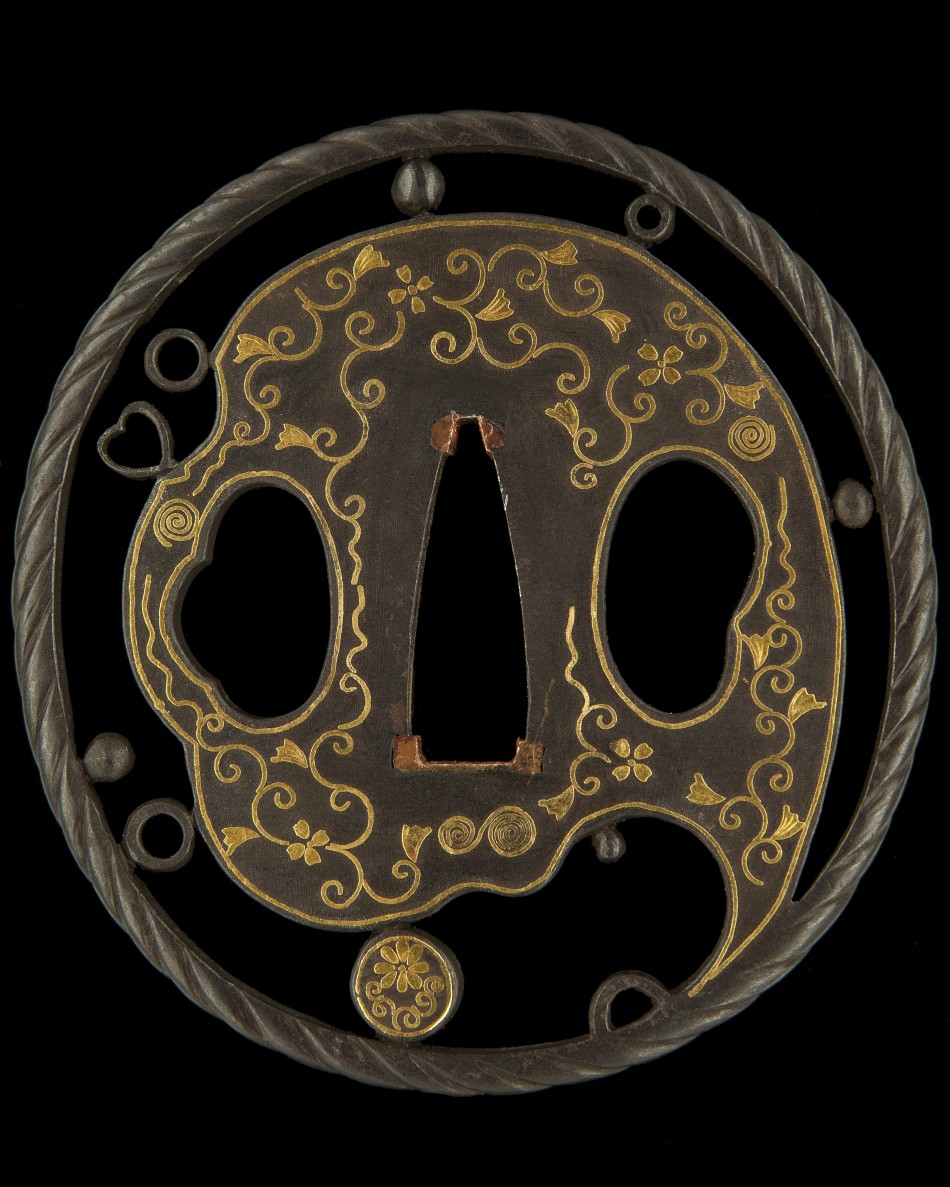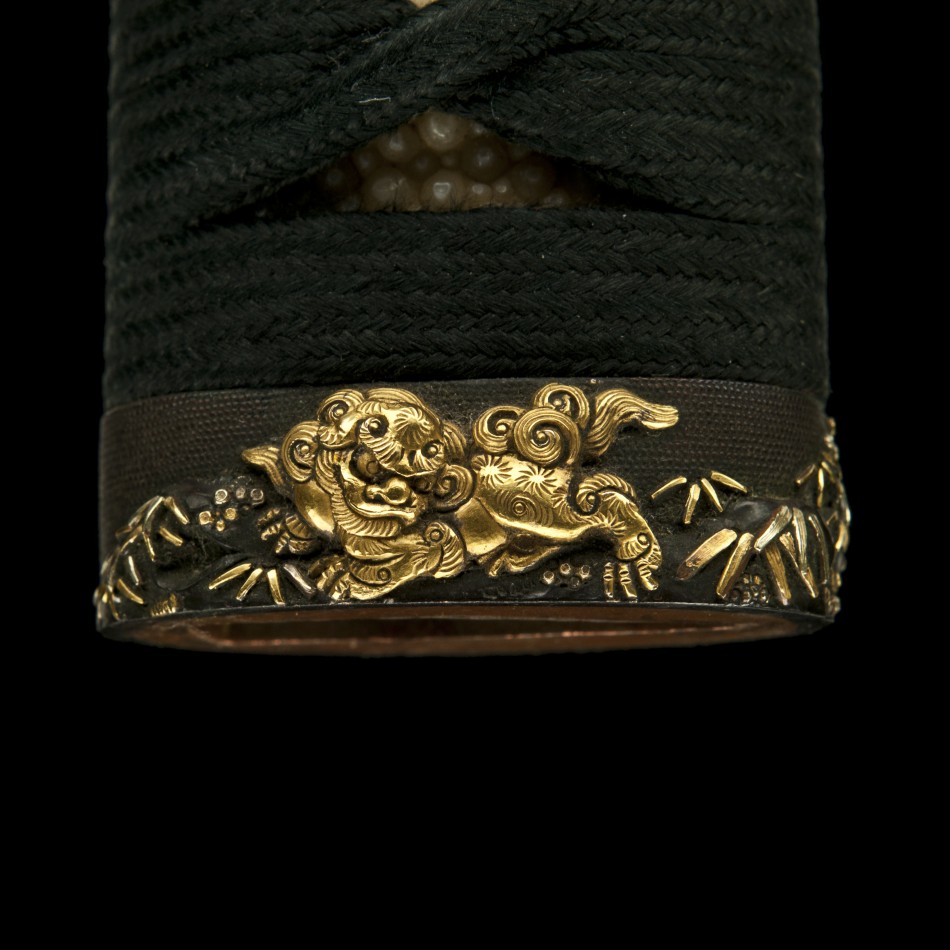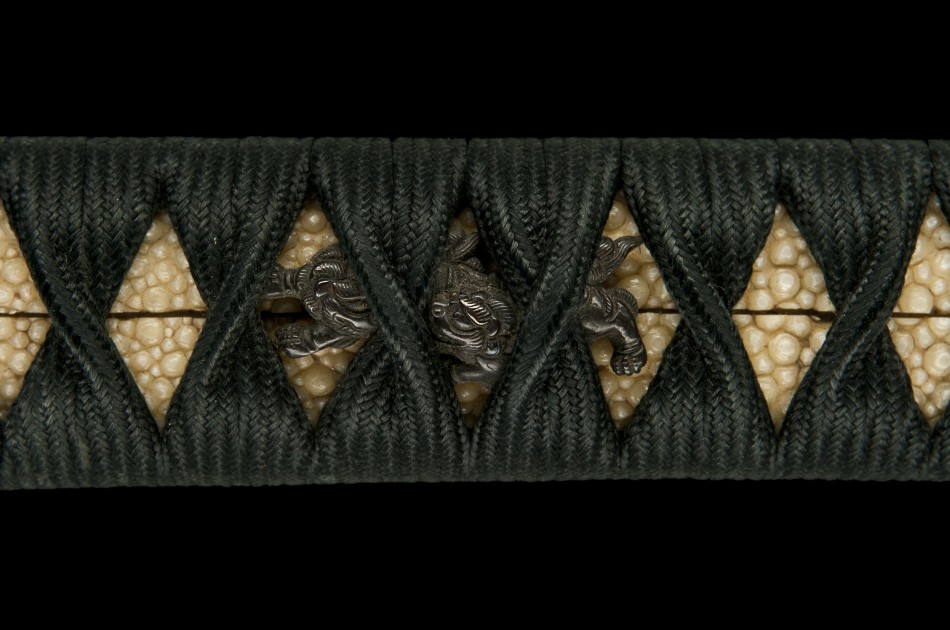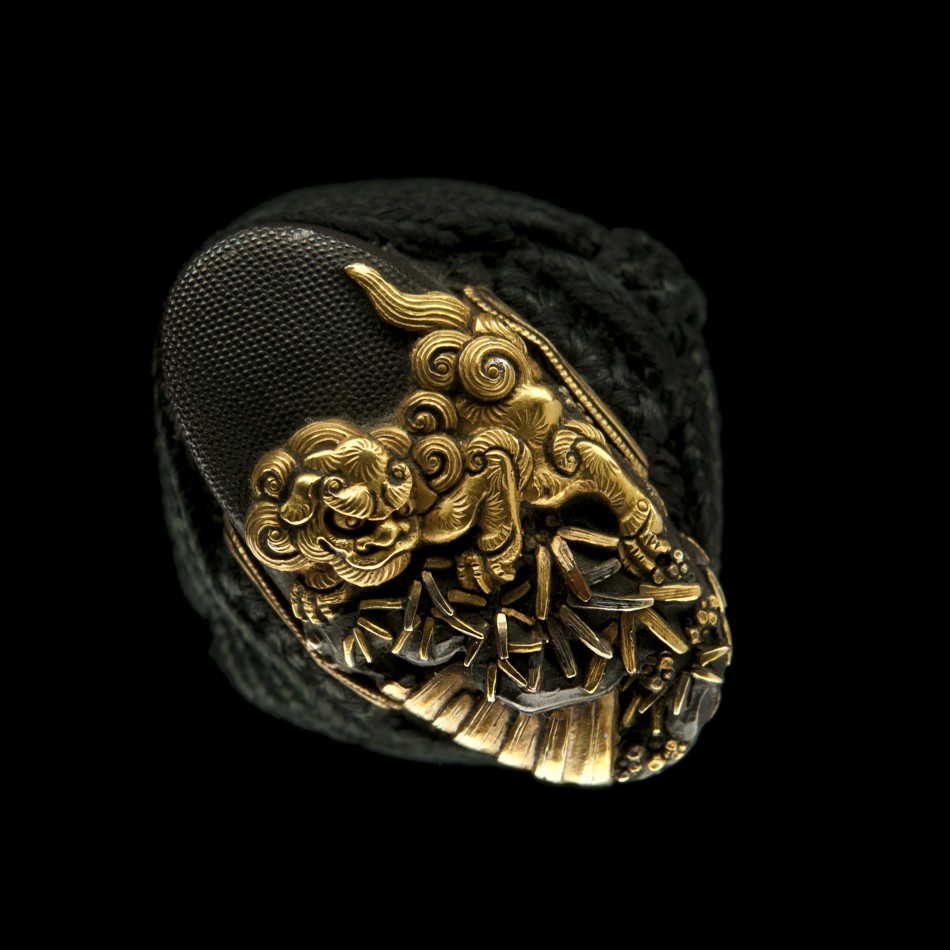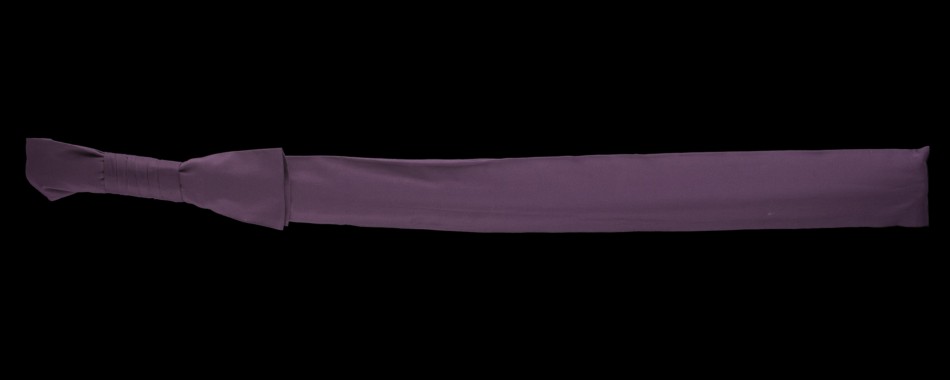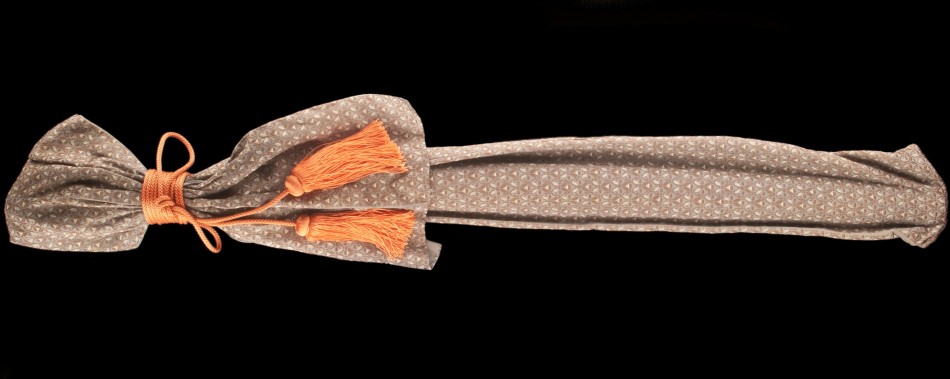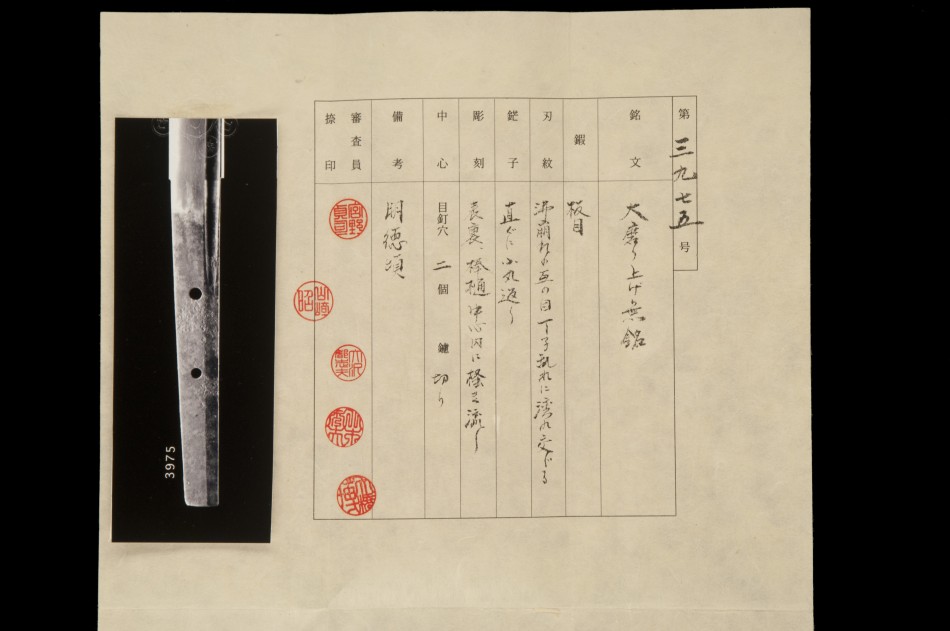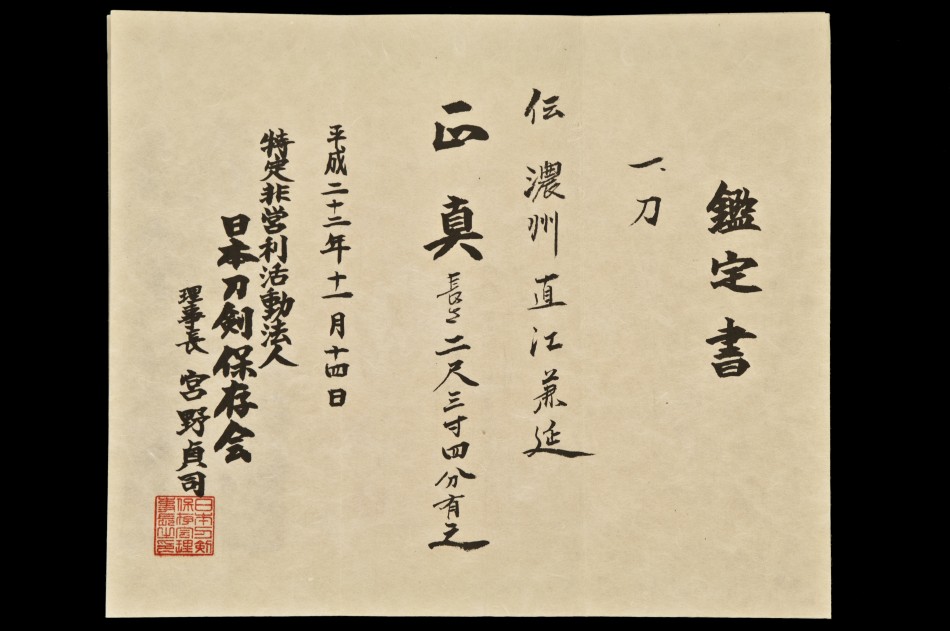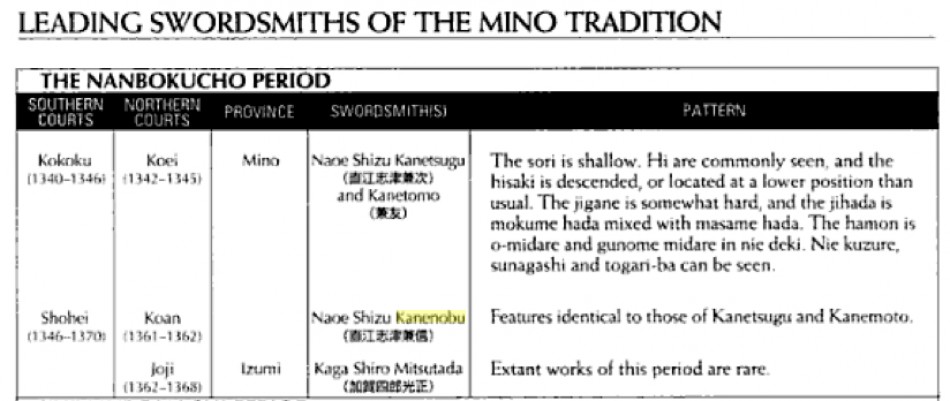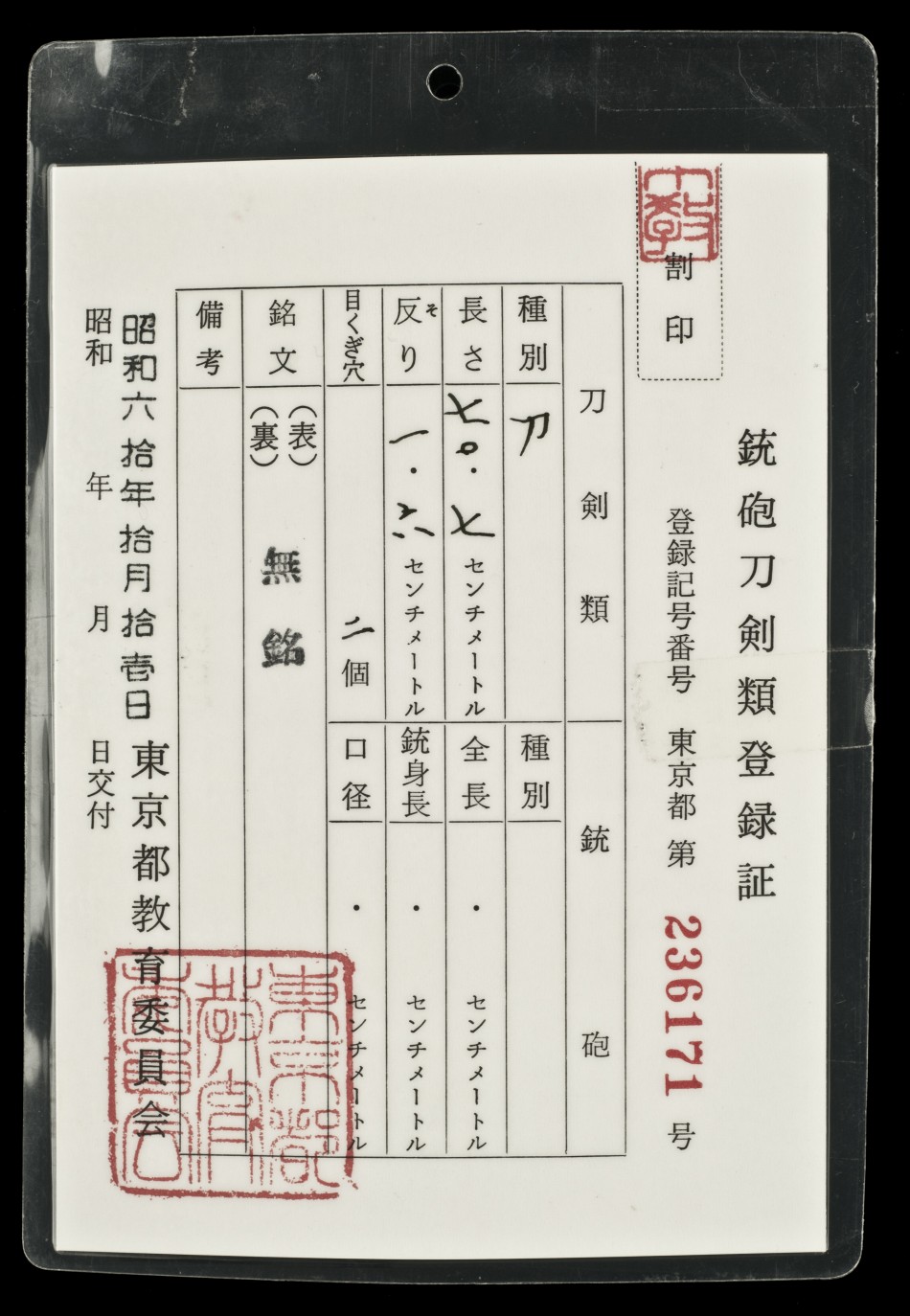A NAOE SHIZU KANENOBU KATANA
Overview (full text description follows photos)
Type: Katana (unsigned, o-suriage)
Item No.: ujka046
Swordsmith: Naoe Shizu Kanenobu
Provenance: A memento to/of Naval Captain Ito Sukeyasu (full details below)
Period: Nambokucho period (Meitoku era): ~1394, more than 600 years old)
Location: Mino province (Gifu prefecture)
Length: 70.7cm
Curvature: 1.6cm
Hamon: Gunome with Nie-deki (wavy temperline with visible crystals)
Koshirae: Full koshirae mounting with a signed vintage shirasaya scabbard to preserve the blade
Fujishiro: Jo-Saku (superior swordsmith)
Included: NTHK certificate, koshirae (mountings), signed shirasaya scabbard, traditional katana carry bags, sword maintenance kit, illustrated maintenance guide, sword stand, full exportation support to send sword to home country
This sword has been sold to a private collector.
Photos (click for larger view)
Born in Saga prefecture (Hizen) in Kyushu, Captain Ito Sukeyasu studied at the Imperial Japanese Naval Academy from the 19th of Meiji (1886) and graduated on the 23rd of Meiji (1890). Right after he was promoted to be a junior commissioned officer, he participated in First Sino- Japanese war (August 1, 1894 to April 17, 1895. He also participated in the Russo-Japanese War (February 8, 1904 to September 5, 1905).
He was promoted to be a commissioned officer in the 40th of Meiji (1907). Once he was promoted to Captain on December 1st, 2nd of Taisho (1913), he was in charge of a Naniwa-class protected cruiser called, “IJN Takachiho”.
Takachiho was torpedoed and sunk on October 17, 1914 by a German Navy S-90 during WWI.
271 officers and men perished including Captain Ito.
The largest single loss of life during the entire war.
*All photos taken professionally by Eric Bossick for Unique Japan
Below: On the middle/right area of the vintage shirasaya (magnolia scabbard), it reads:
Ko (Deceased/Dead), Ito Taisa (Captain Ito), Ihin (Memento)…A memento of the Deceased Captain Ito.
The four larger Japanese kanji characters on the left hand side (strike point of the blade) reads the Captain’s name: “Ito Sukeyasu”.
This rare katana by Naoe Shizu Kanenobu has a length of 70.7cm and a lovely curvature of 1.6cm. It dates back 650 years to a significant time in Japanese history called the Nambokucho period – also known as the Northern and Southern Courts period.
A thrilling bo-hi (groove) extends the full length of the blade. The primary purpose of the groove was to lighten the blade, so as to give the Samurai better balance and control.
A prime virtue of the groove is that it delivered added strength to the sword as the cross-section of the blade will reveal the characteristics of an i-beam.
The founder, Shizu Kaneuji of the Naoe Shizu school was one of the great Masamune’s ten students. This sword was made by a student of Kaneuji, Naoe Shizu Kanenobu.
Fascinatingly, Kaneuji moved to Naoe village in Nanboku period and became the leader of the school he founded, Naoe Shizu. Their unique craftsmanship is a mix with Yamato Den (from Nara) and Soshu Den (Masamune area, Kamakura) even though they were based from Mino.
The lovely jihada (body grain) features itame (timber grain) with shirake utsuri (this is like a faint shadow found on the upper part of the blade, typical of the Mino tradition). Notice the plentiful amounts of highly-valued Nie-deki clusters of visible crystals in the body of the sword.
In the middle of the sword within the hamon you can find kinsuji (lightning bolts) and sunagashi (streaks of sand, which is more discernible). Both highly prized for sword connoisseurs.
An formidable classic copper habaki that dates back to the Edo period (pre 1868).
The distinctive red saya (scabbard) is also extremely significant in Japanese culture. The color red symbolizes strength and leadership, reminiscent of the rising sun. It also traditionally represents good fortune, happiness, and luck. This is undoubtably a mounting meant to be worn for very special occasions.
The tsuba (guard) is an intricate creation of karakusa (floral arabesques) pattern crafted in the early 20th century and valued itself at well over 100,000 yen ($1,300).
Notice the “heart” symbol on the tsuba. This is called inome or the eye of a wild boar (inoshishi).
This heart symbol signifies “direction with purpose”. As the inoshishi charged, they charged with focus, never wavering. This moral correctness of Rectitude is a virtue the Samurai held very dear.
A closer look at the beautiful karakusa (floral arabesques) pattern crafted in the early 20th century.
For those who have spent time in Japan, and especially on Okinawa, Shisa lions are unmistakable. They are a traditional Ryukyuan decoration, often in pairs, resembling a cross between a lion and a dog, from Okinawan mythology.
Shisa are wards, believed to protect one from evil. The left shisa traditionally has a closed mouth, whereas the right one is open.
All the Shisa pieces on this sword’s koshirae (mounting) were made more than 150 years ago during the Edo period at the height of skilled decorative metalwork.
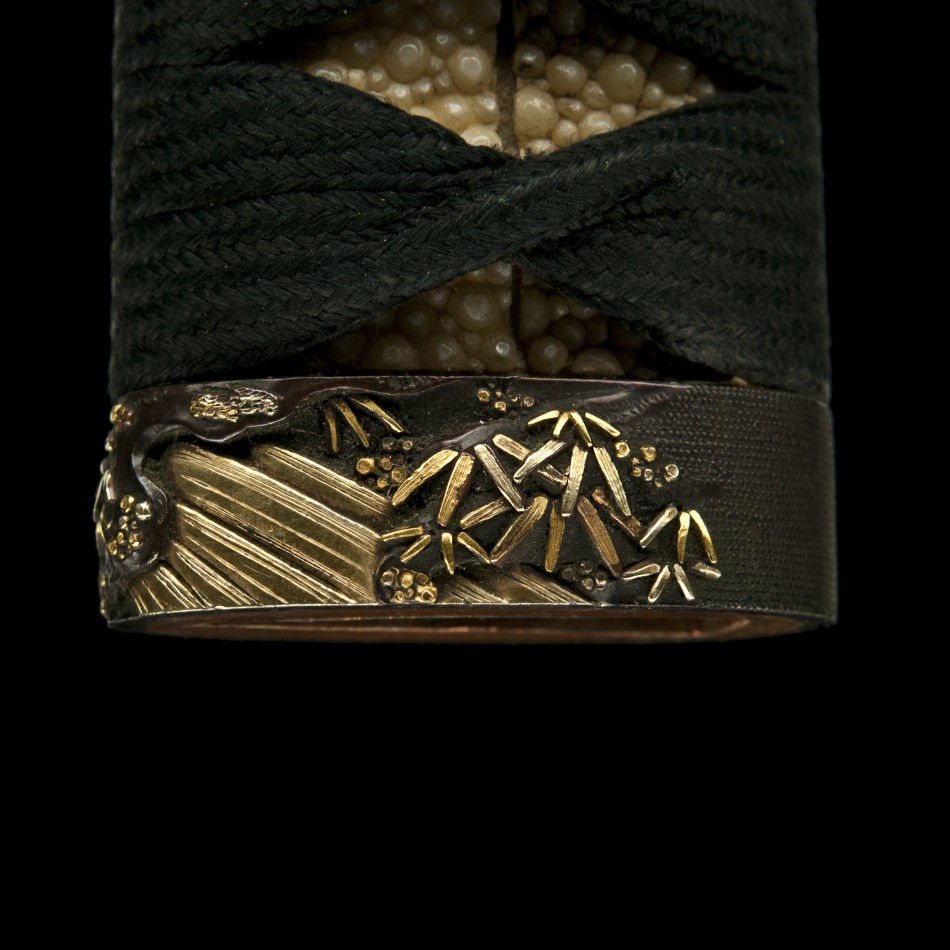
More fine metalwork in what appears to be a depiction of bamboo. In Japan, a bamboo forest sometimes surrounds a Shinto shrine as part of a sacred barrier against evil.
Further Shisa lions can be found on the sword’s menuki (ornamental grips under the silk as illustrated above).
Below, an exquisite Shisa lion crafted in the Edo period is featured prominently on the kashira (pommel).
Above is the carry bag for the sword’s shirasaya. Below is the silk brocade carry bag for the sword’s koshirae (mounting).
Captain Ito’s ancestry were high ranking Samurai in Hizen.
His family kamon (crest) is Iorimokkou (庵木瓜) as illustrated above.
NTHK Kanteisho certificate (A sword designated as Important by the Nihon Token Hozon Kai).
Stamped by 5 independent sword appraisal experts from the organization.
The Connoiseurs Book of Japanese Swords (ie. the Bible of Japanese swords) listed Naoe Shizu Kanenobu as leading smith in the Mino Tradition.
A screenshot from the book is pictured above. Below is the sword’s torokusho (registration card).
Description:
This rare katana dates back 650 years to a significant time in Japanese history called the Nambokucho period – also known as the Northern and Southern Courts period, spanning from 1336 to 1392.
During this era, there existed a Northern Imperial Court in Kyoto, and a Southern Imperial Court in Nara. Ideologically, the two courts fought bitterly for fifty years, with the South giving up to the North in 1392.
This sword was proudly owned by a prominent figure in Japanese Naval history, Captain Ito Sukeyasu.
Born in Saga prefecture (Hizen), Captain Ito Sukeyasu started studying in Imperial Japanese Naval Academy in 19th of Meiji (1886) and graduated in the 23rd of Meiji (1890). Right after he was promoted to be a junior commissioned officer, he participated in First Sino- Japanese war (August 1, 1894 to April 17, 1895). He also participated in Russo-Japanese War (February 8, 1904 to September 5, 1905).
He was promoted to be a commissioned officer in the 40th of Meiji (1907). Once he was promoted to Captain on December 1st, 2nd of Taisho (1913), he was in charge on a Naniwa-class protected cruiser called, “IJN Takachiho”
IJN Takachiho, which was built in Newcastle England in 1885, was torpedoed and sunk on Oct. 17, 1914 by a German Navy S-90 during WWI. 271 officers and men perished including Captain Ito. The largest single loss of life during the entire war.
His wife, Eichiyo was a great- grandchild of Nabeshima Narinao – was the 9th generation of domain lord in Hizen, currently in Saga prefecture in Kyushu. One of her cousins was Princess Nashimoto Itsuko was married to Prince Nashimoto Morimasa. Princess Itsuko was known as the most beautiful woman in the royal family at the time.
Captain Ito’s ancestry were high ranking Samurai in Hizen. His family kamon (crest) is Iorimokkou (庵木瓜).
A thrilling bo-hi (groove) extends the full length of the blade. The primary purpose of the groove was to lighten the blade, so as to give the Samurai better balance and control. A prime virtue of the groove is that it delivered added strength to the sword as the cross-section of the blade will reveal the characteristics of an i-beam.
The founder, Shizu Kaneuji of the Naoe Shizu school was one of the great Masamune’s ten students. This sword was made by a student of Kaneuji, Naoe Shizu Kanenobu.
Fascinatingly, Kaneuji moved to Naoe village in Nanboku period and became the leader of the school he founded, Naoe Shizu. Their unique craftsmanship is a mix with Yamato Den (from Nara) and Soshu Den (Masamune area, Kamakura) even though they were based from Mino.
The Connoiseurs Book of Japanese Swords (ie. the Bible of Japanese swords) listed Naoe Shizu Kanenobu as leading smith in the Mino Tradition. A screenshot from the book is pictured above.
The koshirae of this sword is, in a word, spectacular. The menuki (ornamental grips under the silk handle), the fuchi (collar) and the kashira (pommel) will reveal incredibly detailed Shisa lions (dogs).
For those who have spent time in Japan, and especially on Okinawa, Shisa lions are unmistakable. They are a traditional Ryukyuan decoration, often in pairs, resembling a cross between a lion and a dog, from Okinawan mythology.
Shisa are wards, believed to protect one from evil. The left shisa traditionally has a closed mouth, whereas the right one is open.
All the Shisa pieces on this sword’s koshirae (mounting) were made more than 150 years ago during the Edo period at the height of skilled decorative metalwork.
The sword was reviewed by a panel of high-ranking judges at the NTHK (Nihon Token Hozon Kai) and granted this katana a well-deserved ‘Important’ status.
It gives me great honor to offer this truly magnificent and historically significant katana. PK
Questions?
To request further information or secure immediate ownership of a sword featured on our website, please email me, Pablo Kuntz.
For steps toward ownership including all payment options, visit 5 Easy Steps to Owning an Authentic Japanese Samurai Sword.
ALL SAMURAI SWORDS from Unique Japan are GUARANTEED AUTHENTIC and come with a 3-DAY WORRY FREE Inspection Period.
Upcoming Sword Shows
If you have the pleasure of living in Japan or visiting the country, we strongly recommend that you come to one of our upcoming sword shows.
At each show, we have dozens of beautiful Japanese swords to you to discover and secure for your immediate ownership.
If you cannot make it to a show, but you see something you would like to own from our website please contact me for purchase inquiries.
Legal Exportation from Japan
Unique Japan has safely sent dozens of swords from Japan to countries all over the world. All legal exportation paperwork is included with every purchase. Please allow about 4 weeks for us to process and ship an order from Japan.



